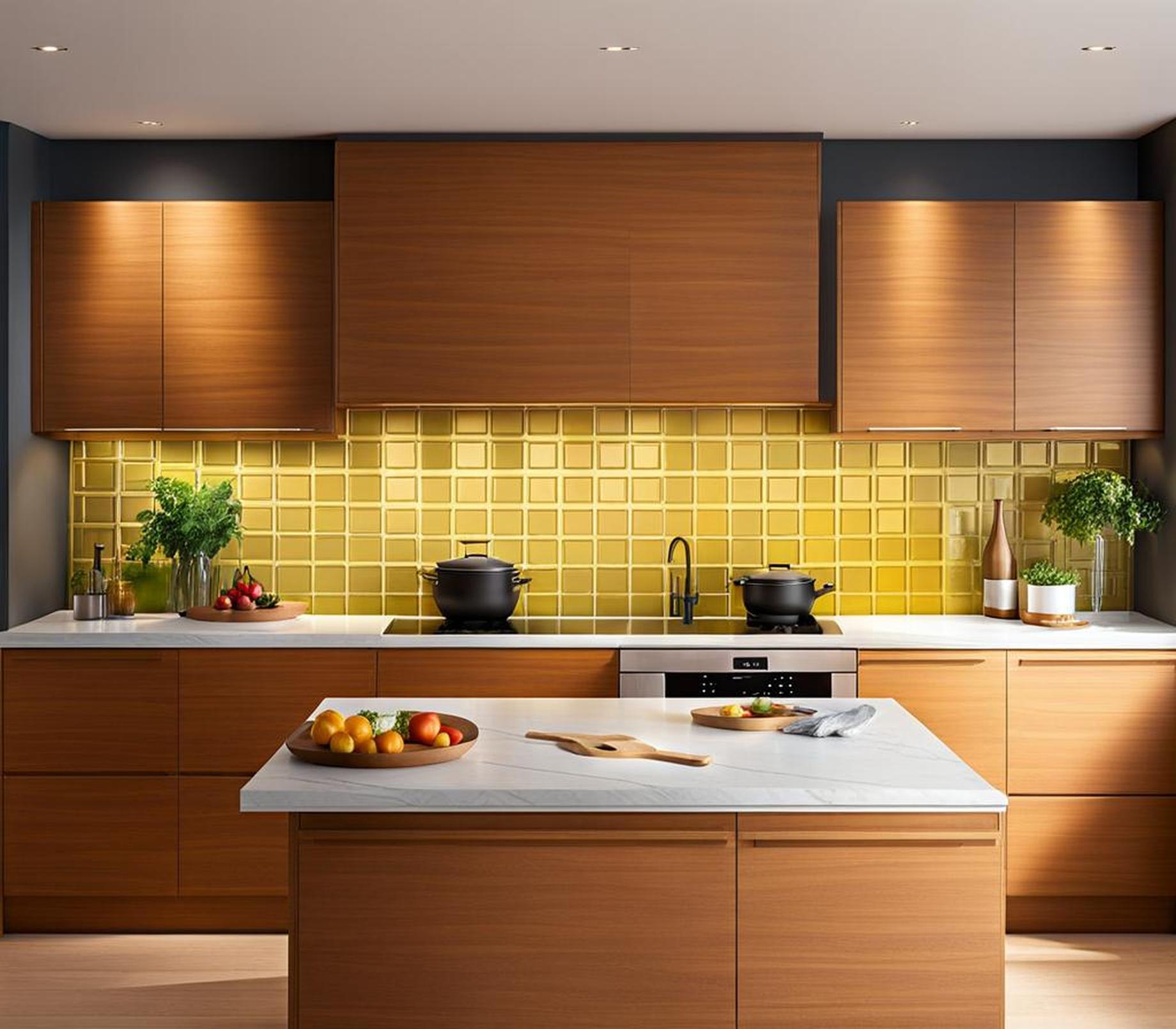Is your kitchen backsplash looking tired and dated? Painting tile or glass backsplash is an affordable way to transform the look of your kitchen without a full renovation. With the right preparatory steps and paint for the job, you can easily revitalize your backsplash with a fresh new color.
In this post, we’ll explore popular paint options for backsplashes and tips for choosing the best one for your needs. Whether you’re on a budget, want maximum durability, or need low-odor application, there is a backsplash paint to help make your kitchen shine.
Latex Paint
What is Latex Paint?
Latex paint, also called acrylic paint, is a water-based interior paint commonly used on walls and ceilings. It comes in a variety of sheens from matte to high-gloss, with semi-gloss and satin finishes being popular choices for kitchens.
Latex paints are accessible, affordable, and provide good washability. However, proper prep and priming are essential when using latex paint on tile or glass backsplashes for best adhesion and durability.
Benefits of Latex Paint
There are several benefits that make latex paint a top choice for DIYers painting their backsplash:

- Affordable and accessible – Latex paint is easy to find at any hardware store or home improvement center for $20-50 per gallon.
- Good color options – Latex paint comes in virtually any color imaginable so you can find the perfect shade for your kitchen.
- Easy soap and water cleanup – While painting, simple soap and water keeps brushes and rollers clean.
Prep and Priming
Preparing and priming the surface is crucial when using latex paint on tile or glass backsplash. The slick surface needs etching and a bonding primer for the paint to properly adhere. An adhesion promoting primer specifically made for tile is best. If the surface is especially shiny or glossy, lightly scuffing it up with sandpaper will also help the paint grab hold.
Apply the primer evenly following manufacturer’s instructions, allowing proper dry time between coats. Priming well ahead of painting gives the best results.
Application Tips
When applying latex paint to your backsplash, these tips will help achieve an even, durable finish:
- Use a high quality roller and/or brush . Roller application creates a smoother finish while an angled brush is great for corners.
- Apply a minimum of 2-3 coats for best coverage and durability. Light colors may require additional coats.
- Allow proper dry time between coats as specified on the paint can, usually 2-4 hours.
Enamel Paint
What is Enamel Paint?
Enamel paint is an oil-based, high-gloss paint that provides an extremely hard, durable finish. Popular types of enamel paint include:
- Traditional oil-based enamel
- Water-based acrylic enamel
- Catalyzed epoxy enamel
While oil-based enamel is known for its tough, glossy finish, the fumes require proper ventilation during application.
Benefits of Enamel Paint
Here are some of the benefits that make enamel a good option for backsplash painting:
- High gloss finish – Provides a shiny, reflective surface.
- Durability and scratch resistance – Creates an extremely hard finish that stands up to cleaning and scuffs.
- Good adhesion without primer – Can be applied directly to tile in most cases.
Prep Work
Prepping an existing backsplash for enamel paint involves thoroughly cleaning and lightly scuffing any glossy tile areas to help the paint adhere. No primer is needed on bare tile, however on previously painted tiles or very glossy surfaces, an adhesion promoting primer can better prepare the surface.
Application Tips
Follow these tips when applying enamel paint to backsplash tile:
- Use a high quality natural bristle brush.
- Work in small sections to prevent lap marks.
- Ventilate the kitchen well during application.
- Allow for longer dry times than latex paint – 24+ hours between coats.
Epoxy Paint
What is Epoxy Paint?
Epoxy paint is a two-part paint product that creates an extremely hard, protective coating with excellent adhesion. It is available in self-leveling and non-leveling formulas. Self-leveling epoxy creates a smooth, glossy finish that mirrors glass. Non-leveling formulas have more texture.
While more expensive than other paints, epoxy paint bonds tenaciously to backsplash tile and offers unmatched durability.
Benefits of Epoxy Paint
Epoxy paint has distinct advantages making it ideal for backsplashes:
- Extreme bond strength to tile and glass
- Ultra durable and scratch resistant finish
- Unlimited color options from solids to metallic
Prep Work
Prepping tile for epoxy paint requires proper cleaning to remove grease and soap residue. Any glossy or sealed tiles then need to be scuffed or etched so the epoxy can bond. Using an adhesion promoting primer as well provides extra grip.
Application Tips
When working with epoxy paint, these tips ensure flawless results:
- Use a high quality roller to apply smoothly.
- Ventilate the area very well – fumes are strong.
- Allow 72+ hours cure time before cleaning.
Choosing the Right Paint for Your Backsplash
Selecting the best paint for your backsplash depends on factors like your budget, desired durability, ease of application, and kitchen ventilation.
Make sure to consider prep requirements, dry times, potential fumes and other factors as you evaluate paints for your particular kitchen backsplash and needs.
With the right prep work, paint selection and application tips, you can easily transform the look of your kitchen backsplash without replacing the tile. Check out these before and after photos for inspiration!
Properly prepping the surface, applying compatible primer, and using high quality paint designed for kitchens will help ensure long-lasting results. Your freshly painted backsplash will look amazing for years to come and add a beautiful new focal point to your kitchen!
